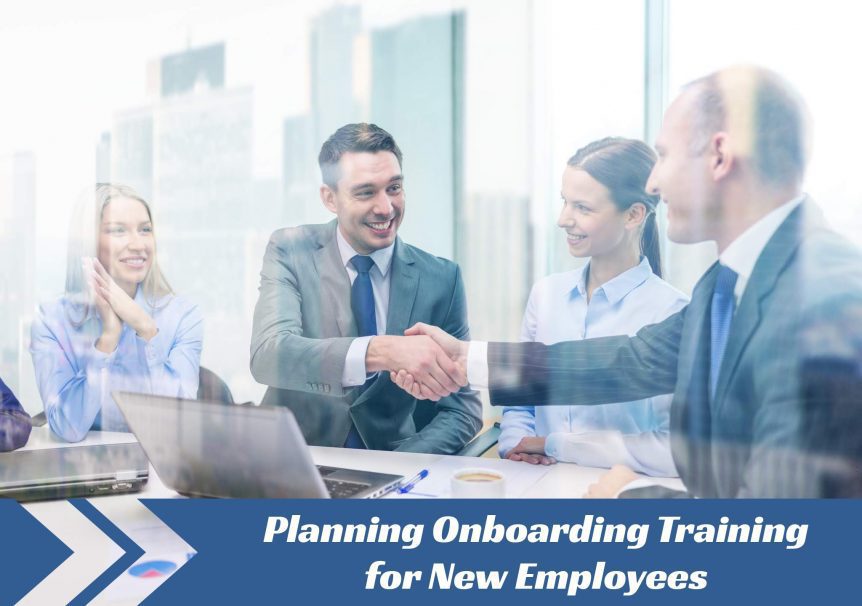Planning Onboarding Training for New Employees
Training is an essential part of the onboarding process for new employees. Too often, however, the delivery and/or implementation of that training is haphazard, with each new employee experiencing something different.
Even when onboarding training is well structured, that structure is often weighted towards ticking boxes rather than ensuring the new employee is equipped for success.
The solution is to properly plan onboarding training in a way that considers the objectives of all stakeholders, i.e. the new employee, their manager/department, the HR department, and the business overall.
Remember the Objective
One of the challenges facing many businesses and industries in the UAE is staff retention. Not only that, the recruitment process is expensive. Therefore, it’s essential you do everything possible to keep new recruits in the business in the earliest days.
After all, the earliest days of a new job are often the toughest for a new employee. The onboarding process, including the training element, should make this easier.
This means remembering the objective of onboarding training. What is that objective?
While there will be some training that is necessary for compliance purposes, compliance is rarely the main objective for onboarding training. It’s also not about getting through a HR process as quickly as possible.
Instead, onboarding training is about getting new members of staff up to speed and comfortable with their new job as quickly as possible.
It’s also about giving new employees the best possible chance to be successful in their new role.
When you achieve this, the employee is less likely to leave in the early days of their new employment.
Divide Training into Categories
There is likely to be different courses in your onboarding training library. Not all these courses have the same level of priority, however, while some courses will apply to some staff members and not to others.
Therefore, it’s important you categorise your onboarding training programmes. Here is an example:
- Standard training, i.e. things like fire safety training, training on HR processes, training on the use of the company network and systems, etc
- Department specific training
- Role-specific training. Examples include product training for salespeople or training on customer service procedures for staff responsible for interacting with customers
- Training that is immediately essential
- Training that is important but does not have to be completed immediately
Develop a Training Programme Order
The next step is to order the training courses based on the various categories you have created. You are likely to have training programmes that will fall into multiple categories.
Creating a training programme order is important to ensure you don’t demand too much too soon from new employees. New employees need to get sufficient time to settle into their new role, get to know the members of their team, and demonstrate their capabilities to their manager.
They also need to build self-confidence that they are going to be able to do the job. That requires them working, not just training.
Having a planned-out onboarding training programme will help with this, i.e. it will ensure new employees get the training they need while also preventing them from becoming overloaded.
Be Flexible
As everyone progresses at a different rate, it’s important you are flexible with the above training plan. Some employees will be happy to charge through the various courses quickly, while others will want to get hands-on as soon as possible and will catch-up with the training as they go.
You will need to have controls in place to ensure everyone completes the onboarding process, and you probably shouldn’t allow a free-for-all, but some flexibility can be beneficial.
Plus, there are additional benefits to being flexible with onboarding training plans:
- It’s important onboarding training meets the immediate needs of the business
- Feedback from managers and other senior staff on the onboarding process is important
- Feedback from staff who have recently gone through onboarding training is important
Utilise All the Technologies and Training Methodologies Available
Your onboarding training programme should use a wide range of course delivery methods. You may focus on one or two, but there are some you might not be using that could be advantageous.
One of the most important is e-learning. E-learning is becoming a crucial part of the onboarding training process in many organisations.
E-learning ensures each new member of staff receives the same standard of training, plus it reduces the resources required to deliver the training.
In addition, new members of staff can complete the course at a time that suits them rather than having to be at a certain place at a certain time, as is the case with face-to-face training.
E-learning doesn’t, however, mean you should necessarily abandon classroom training as this method of delivery has benefits in the onboarding process too.
Other methods of training delivery you should explore for your onboarding training plan include:
- Microlearning
- Blended learning
- Synchronous learning
- Just in time training
The latter, just in time training, can be particularly beneficial as it makes training courses and information available to new recruits when they need it most. This is also the time they will be most receptive to the new information, so you will find that both engagement levels and knowledge retention levels are high.
Putting Your Plan into Action
Pulling your onboarding training process into a structured plan will deliver ongoing benefits to your business. It is worth taking the time to complete.
